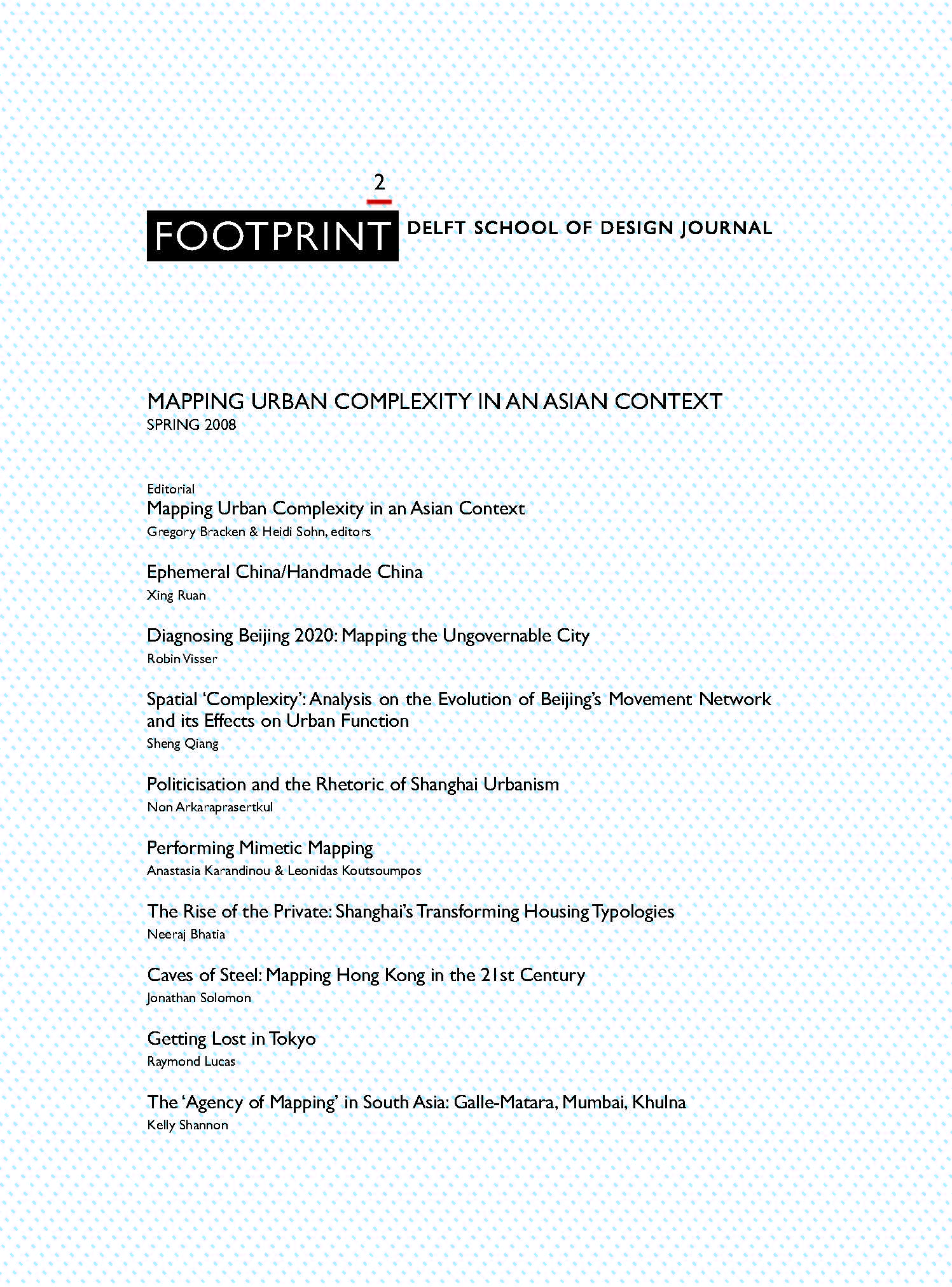Caves of Steel: Mapping Hong Kong in the 21st Century
DOI:
https://doi.org/10.7480/footprint.2.1.679Abstract
Hong Kong’s extraordinary density, the results of a unique geography, economy, and political history, is often represented in cramped housing conditions, unusual sectional conditions, and variations on building typologies. This paper argues that Hong Kong’s density, in combination with its climate and consumer economy, has in fact effected a wholesale interiorisation of public society unprecedented in contemporary urban form. 'Caves of Steel' is borrowed from the title of a 1954 novel by science fiction master Isaac Azimov, in which humanity has been divided into interior and exterior factions. The radical separation of public society in Hong Kong that accompanies the growing disparity of interior and exterior urban space is perhaps better understood through Manuel DeLanda’s (Intensive Science and Virtual Philosophy, 2002) application of the terms ‘intensive’ and ‘extensive’ from the physical sciences to a description of abstract space. Through Reiser (Atlas of Novel Tectonics, 2005) ‘intensive’ and ‘extensive’ properties may be understood in the urban context as competing and collaborating ‘infrastructural’ and ‘topological’ conditions. In Hong Kong the infrastructural (dense interiorised infrastructure of multilevel shopping warrens) and the topological (vast open topology of country parks, new towns, and industrial estates) exist often in immediate proximity, while the gap between their respective public societies continues to grow. Recent proposals for the development of a variety of sites on Hong Kong’s Victoria Harbour waterfront are examined in detail as a case study of this condition and its attendant effects on mapping complex and three-dimensional urban conditions, on notions of post-colonial and post-industrial image and identity, and on the evolution of public space in an Asian context.
Downloads
Published
Issue
Section
License
- Authors retain copyright and grant the journal right of first publication with the work simultaneously licensed under a Creative Commons Attribution License that allows others to share the work with an acknowledgement of the work's authorship and initial publication in this journal.
- Authors are able to enter into separate, additional contractual arrangements for the non-exclusive distribution of the journal's published version of the work (e.g., post it to an institutional repository or publish it in a book), with an acknowledgement of its initial publication in this journal.





